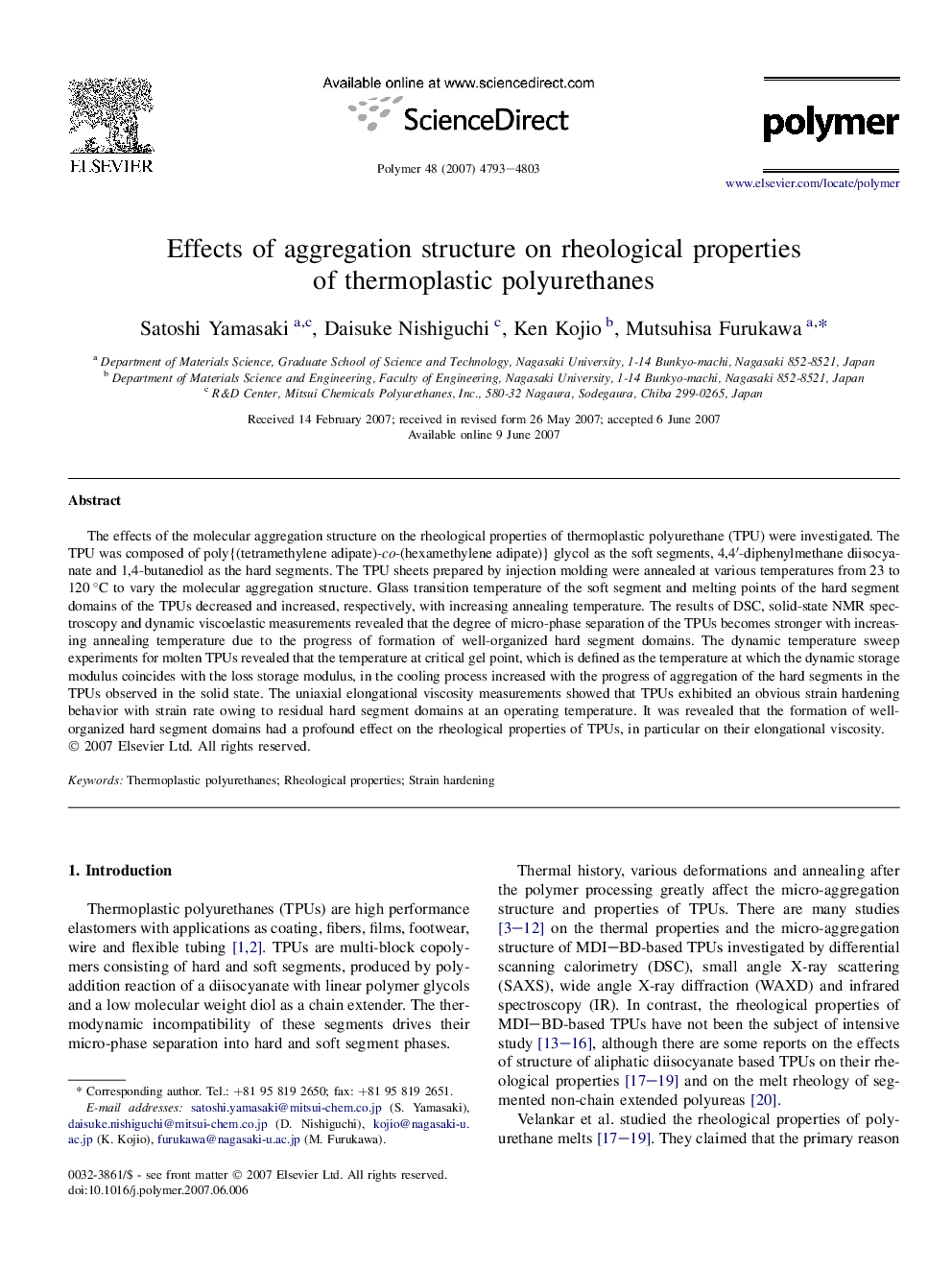| Article ID | Journal | Published Year | Pages | File Type |
|---|---|---|---|---|
| 5185773 | Polymer | 2007 | 11 Pages |
Abstract
The effects of the molecular aggregation structure on the rheological properties of thermoplastic polyurethane (TPU) were investigated. The TPU was composed of poly{(tetramethylene adipate)-co-(hexamethylene adipate)} glycol as the soft segments, 4,4â²-diphenylmethane diisocyanate and 1,4-butanediol as the hard segments. The TPU sheets prepared by injection molding were annealed at various temperatures from 23 to 120 °C to vary the molecular aggregation structure. Glass transition temperature of the soft segment and melting points of the hard segment domains of the TPUs decreased and increased, respectively, with increasing annealing temperature. The results of DSC, solid-state NMR spectroscopy and dynamic viscoelastic measurements revealed that the degree of micro-phase separation of the TPUs becomes stronger with increasing annealing temperature due to the progress of formation of well-organized hard segment domains. The dynamic temperature sweep experiments for molten TPUs revealed that the temperature at critical gel point, which is defined as the temperature at which the dynamic storage modulus coincides with the loss storage modulus, in the cooling process increased with the progress of aggregation of the hard segments in the TPUs observed in the solid state. The uniaxial elongational viscosity measurements showed that TPUs exhibited an obvious strain hardening behavior with strain rate owing to residual hard segment domains at an operating temperature. It was revealed that the formation of well-organized hard segment domains had a profound effect on the rheological properties of TPUs, in particular on their elongational viscosity.
Related Topics
Physical Sciences and Engineering
Chemistry
Organic Chemistry
Authors
Satoshi Yamasaki, Daisuke Nishiguchi, Ken Kojio, Mutsuhisa Furukawa,
